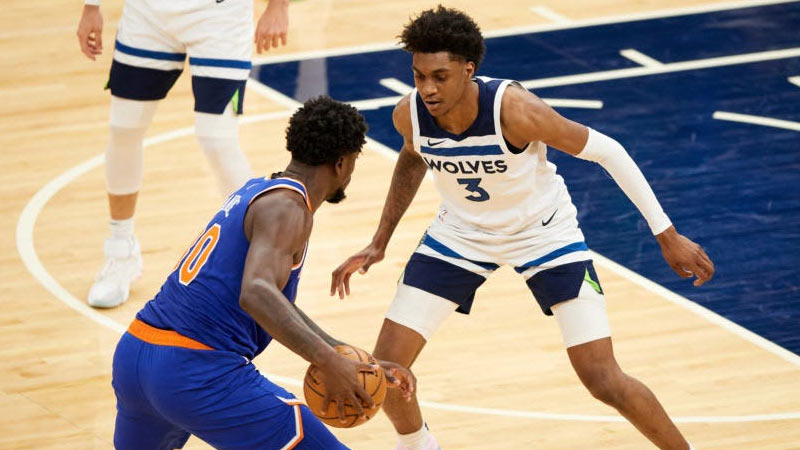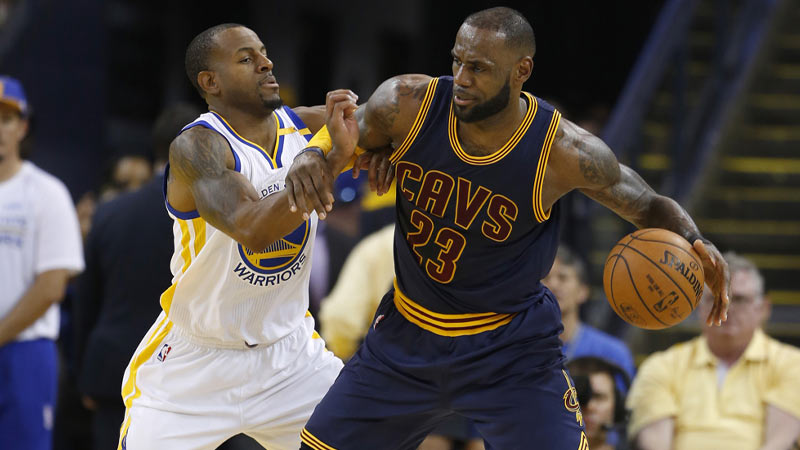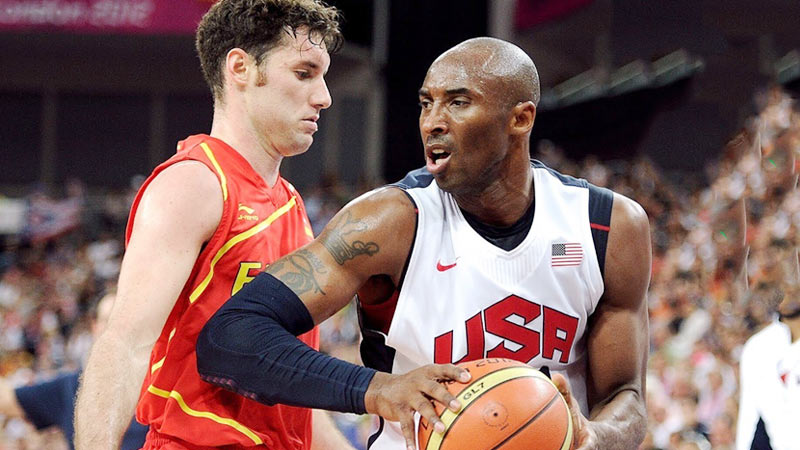In the game of basketball, the strategic positioning of players on the court can significantly influence a team’s offensive and defensive tactics. One such critical area on the court is the “high post,” a position that holds great significance in both traditional and modern basketball playbooks.
In this comprehensive guide, we will explore the concept of the high post in basketball, its role in offensive strategies, defensive considerations, and its impact on the overall flow of the game.
Whether you’re a basketball enthusiast or a player looking to enhance your understanding of the game, this article will provide valuable insights into the importance of the high post in basketball. So, stay focused.
What is High Post in Basketball?
The high post in basketball is a strategic position on the court, usually located at the top of the key or around the free-throw line extended. It lies between the low post near the basket and the perimeter.
The player positioned in the high post has a versatile role, impacting both offensive and defensive strategies. Offensively, they can act as playmakers, shooters, or drivers, creating scoring opportunities for themselves and their teammates.
Defensively, the high post must be guarded closely to prevent easy scoring opportunities and maintain perimeter defense. The high post’s positioning allows teams to spread out the defense, creating spacing and opening up opportunities for cuts and shots.
Offense in High Post

Source: basketballpoetry.com
The high post is a strategic position on the basketball court that holds immense offensive potential. Players stationed in the high post can significantly impact the flow of the game through their playmaking abilities, shooting prowess, and strategic decision-making.
Playmaking Hub
Players in the high post often act as playmaking hubs for their team’s offense. They have a vantage point that allows them to survey the court and make quick decisions.
From this position, they can distribute the ball to teammates, initiating ball movement and creating scoring opportunities. Their ability to pass accurately and find open teammates makes them valuable assets in breaking down opposing defenses.
Mid-Range Threat
The high post player’s positioning allows them to be a threat from mid-range. They can take advantage of their distance from the basket to pull defenders away from the paint and force them to defend on the perimeter.
This creates space for cutters to the basket and opens up opportunities for teammates to receive passes for open shots.
Drive and Kick
Players in the high post can utilize their position to drive to the basket effectively. Their quick moves and decision-making skills can force defenders to collapse on them, creating opportunities for kick-out passes to open shooters on the perimeter.
Pick-and-Pop
The high post player can also be involved in pick-and-pop plays, where they set a screen for a ball handler and then “pop” out to the perimeter for a jump shot.
This play exploits the player’s shooting ability and creates confusion for defenders, leading to open shots or driving lanes for the offense.
Defensive Impact from the High Post

Source: team.fastmodelsports.com
Defensively, the high post can be a challenging area to guard, and it requires a careful balance of positioning and anticipation to prevent opponents from exploiting this strategic position.
Defending the Playmaker
When an opposing player is stationed in the high post as a playmaker, defenders must be attentive to their passing lanes and quick decision-making. Closeout speed and active hands are crucial in disrupting passes and forcing turnovers.
Contesting Mid-Range Shots
Defenders must be vigilant in challenging mid-range shots from players in the high post. Quick footwork and closeout techniques are essential in contesting shots effectively and limiting the high post player’s scoring opportunities.
Rotational Responsibilities
Defending the high post requires effective communication and rotational awareness. Defenders must be ready to rotate quickly to cover open players if a high post player drives to the basket or passes to a teammate on the perimeter.
Denying Entry Passes
Denying entry passes into the high post is a key defensive strategy. Defenders must work to deny the ball into the high post and apply pressure to the passer to disrupt the offense’s flow.
Role and Responsibilities of Players in the High Post
The high post in basketball is a strategic position that holds immense significance in offensive play.
Players occupying the high post have distinct roles and responsibilities that can greatly impact a team’s offensive efficiency and scoring opportunities.
Playmaker and Facilitator
Players in the high post often act as playmakers and facilitators for their team. They possess a combination of passing and court vision skills that allow them to read the defense and make quick decisions.
From the high post position, they can effectively distribute the ball to open teammates, initiating ball movement and creating scoring opportunities.
Mid-Range Shooter
High-post players are typically adept at shooting from mid-range. This shooting ability forces defenders to respect their jump shot, which opens up driving lanes for themselves or their teammates.
Moreover, their shooting threat stretches the defense, allowing for better spacing and additional scoring options.
Post-Up Scorer
In certain offensive sets, high-post players may be tasked with scoring in the post. Their positioning near the free-throw line extended provides an advantageous angle to attack the basket or utilize post moves.
This skill set can be particularly effective against smaller defenders, leading to high-percentage scoring opportunities.
Decision-making and Timing
Players in the high post need excellent decision-making skills, as they often find themselves in situations where they must quickly read the defense and make the right play.
Timing is crucial in executing passes, cuts, or drives, as any delay could lead to turnovers or missed opportunities.
Setting Screens and Pick-and-Roll
High-post players can also set screens to initiate pick-and-roll actions. By setting solid screens, they can create space for their teammates to drive or shoot, and they may even become the recipient of the pick-and-roll, allowing them to roll to the basket for a scoring chance.
Defensive Contributions
Defensively, high post players play a vital role in protecting the paint and contesting mid-range shots. They need to communicate effectively with teammates, providing help defense when necessary and contesting shots without fouling.
Fundamental Skills for High Post Players
High-post players in basketball play a crucial role in their team’s offensive strategies.
To excel in this position, they need a well-rounded skill set that enables them to impact the game both as scorers and facilitators. Here are the fundamental skills that high post players should focus on:
Mid-range Shooting
High-post players must be proficient in mid-range jump shots. This skill allows them to pull defenders away from the basket, creating space for teammates to cut or shoot from the perimeter.
A reliable mid-range shot makes them a scoring threat and forces defenders to respect their shooting ability.
Passing and Vision
High-post players act as playmakers, so excellent passing and court vision are essential. They should be able to read the defense and make quick, accurate passes to open teammates.
Passing from the high post can lead to backdoor cuts, and kick-out passes to shooters and set up easy scoring opportunities for teammates.
Face-up Game
High-post players should be comfortable facing up against defenders. They need the ability to take defenders off the dribble, drive to the basket, and finish around the rim. This skill puts pressure on the defense and opens up additional scoring options.
Post Moves
While the high post is not the traditional low post, high post players should still possess basic post moves. These moves, such as drop steps, hook shots, and up-and-under moves, can be effective in one-on-one situations against smaller or weaker defenders.
Screening
High-post players need to be effective screeners. Setting solid screens can free up teammates for open shots or drives to the basket. Proper timing and positioning are critical to creating scoring opportunities through effective screening.
Rebounding
Even though high post players are often away from the basket, they should still be active rebounders. Offensive rebounds can lead to second-chance points, while defensive rebounds help start fast breaks and limit opponents’ scoring opportunities.
Defensive Awareness
High-post players should be versatile defenders, capable of guarding both big men and perimeter players. They need to understand defensive rotations, communicate with teammates, and contest shots effectively.
Basketball IQ
High-post players should have a high basketball IQ. Understanding offensive and defensive concepts, recognizing patterns, and making intelligent decisions on the court contribute to their overall effectiveness.
High Post vs. Low Post: Knowing the Difference
In basketball, the positions of the high post and low post play crucial roles in offensive and defensive strategies. The differences between these two positions can help players and teams optimize their gameplay and capitalize on their strengths.
Position on the Court
The primary distinction between the high post and the low post is their location on the court. The high post is typically situated at the top of the key or around the free-throw line extended, while the low post is closer to the basket, usually near the baseline or low block.
Offensive Role
Players in the high post often act as playmakers, utilizing their passing and shooting skills to create scoring opportunities for teammates. They have a clear view of the entire court, making it easier to initiate ball movement and set up plays.
On the other hand, players in the low post are usually strong, physically dominant players with excellent footwork and scoring abilities. They use their positioning near the basket to score efficiently through post moves, hooks, and layups.
Spacing and Ball Movement
The high post is vital for creating offensive spacing. Players stationed in the high post draw defenders away from the paint, opening up driving lanes and allowing for better ball movement.
In contrast, the low post can create congestion in the paint as defenders collapse to prevent easy baskets.
Defensive Considerations
Defending the high post requires defenders to be agile and quick to close out on shooters or challenge driving players effectively. Defending the low post necessitates strong one-on-one defense and the ability to prevent post players from establishing deep positions near the basket.
Modern Basketball Trends
In modern basketball, the emphasis on spacing, three-point shooting, and versatility has elevated the significance of the high post. Teams often use skilled passing big men in the high post to exploit defensive rotations and create open shots for teammates.
However, the low post remains valuable for teams with dominant post scorers who can draw fouls and provide a physical presence inside.
FAQs
What is the high post in basketball?
The high post in basketball refers to a specific area on the court, typically at the top of the key or around the free-throw line extended. It is a strategic position that lies between the low post (near the basket) and the perimeter.
The player occupying the high post has a versatile role and can impact both the offense and defense of the team.
What are the offensive advantages of utilizing the high post?
The high post is a key position for executing various offensive strategies. Players in the high post can act as playmakers, facilitating ball movement and setting up teammates for scoring opportunities.
They can also take advantage of their positioning to shoot from mid-range or drive to the basket, drawing defenders away from the paint and opening up space for cutters and shooters.
How does the high post contribute to offensive spacing?
The high post plays a crucial role in offensive spacing as it allows the team to spread out the defense.
When a player is stationed in the high post, defenders are forced to step away from the paint to guard them, creating opportunities for backdoor cuts, drives to the basket, and open three-point shots for teammates.
What defensive considerations are involved in defending the high post?
Defending the high post requires a balance between preventing easy scoring opportunities and maintaining perimeter defense.
Defenders must be wary of the player in the high post’s ability to shoot, pass, or drive, while also being mindful of potential backdoor cuts or screens that may exploit defensive lapses.
How does the high post fit into modern basketball strategies?
In modern basketball, the high post remains a valuable asset, especially in offenses that prioritize ball movement, spacing, and versatility.
Teams often use players with strong passing and shooting skills in the high post to exploit defensive rotations and create scoring opportunities for themselves and their teammates.
End Call
The high post in basketball is a pivotal position that plays a significant role in offensive strategies, defensive considerations, and overall game flow.
Its versatility allows players to impact various facets of the game, making it an essential part of any team’s playbook. Whether used as a playmaker, shooter, or facilitator, the high post remains a critical area on the court that can influence the outcome of a game.
The importance of the high post enhances players’ and coaches’ ability to optimize their offensive tactics, create spacing, and exploit defensive weaknesses.
As the game continues to evolve, the high post’s role in basketball will undoubtedly remain an integral aspect of successful team play. Best of luck.







